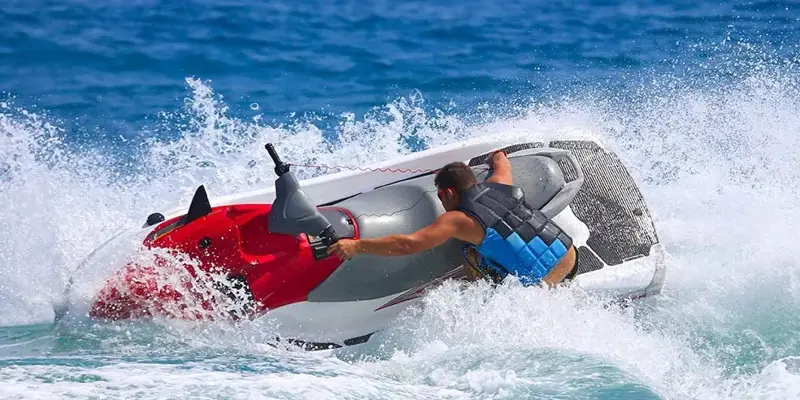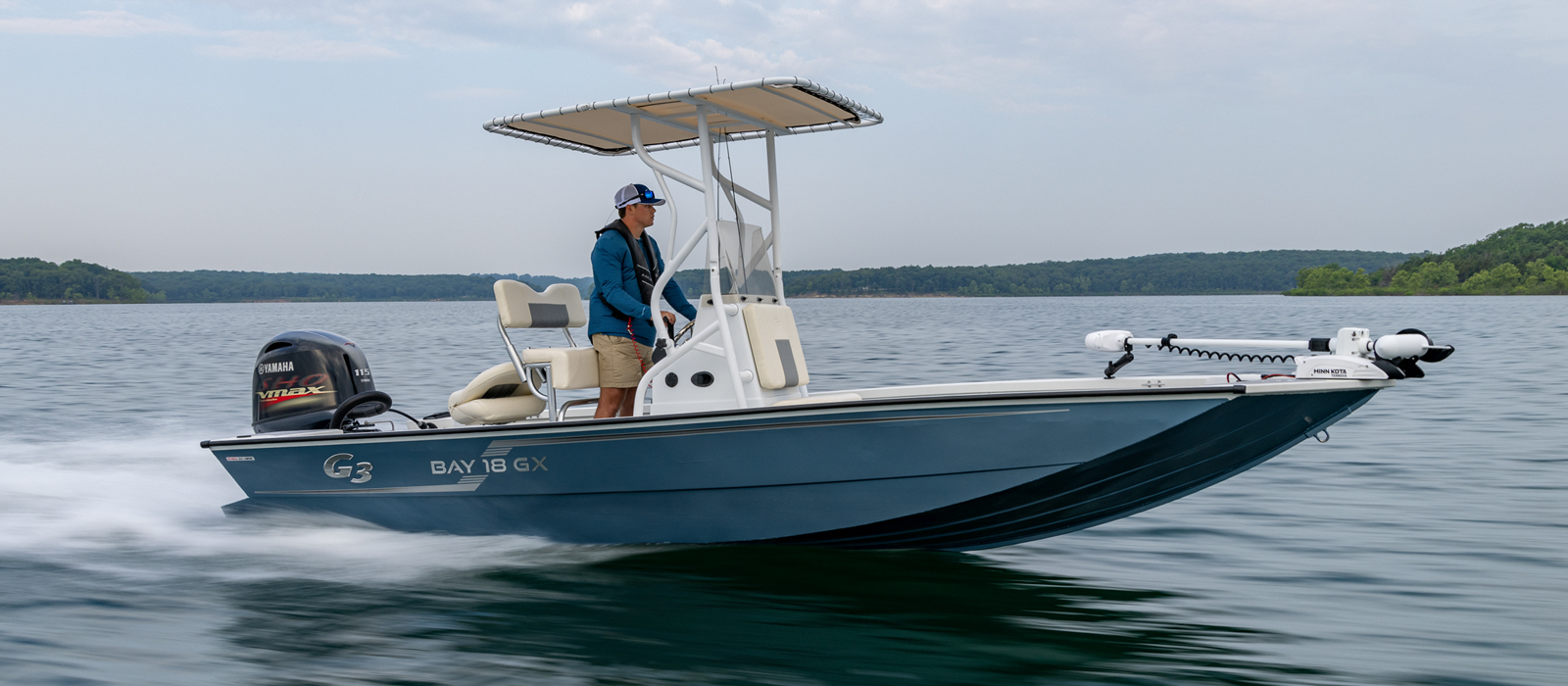Deepest Part of the Ocean: Exploring the Abyssal Zone Secrets
The deepest part of the ocean, known as the hadal zone, begins at a depth of approximately 6,000 meters (20,000 feet) and extends to the ocean floor. This mysterious and largely unexplored region is home to a unique ecosystem consisting of immense pressure, darkness, and near-freezing temperatures. The most well-known area within the hadal zone is the Mariana Trench, specifically Challenger Deep, which reaches a staggering depth of 10,994 meters (36,070 feet) – the Earth's deepest known point.

Exploration in these harsh conditions is challenging, but the advancements in technology have allowed scientists to gain valuable insights into this alien world. The vast, uncharted territories of the hadal zone host a multitude of unique and highly adapted marine life, many of which remain undiscovered due to the extreme conditions. As scientists continue to investigate the mysteries of the deep, they strive to better understand the geological and oceanographic processes that shape the hadal zone as well as address the increasing pollution and anthropogenic impacts on this delicate ecosystem.
Key Takeaways
- The hadal zone represents the deepest and most extreme ocean environment, highlighted by the Mariana Trench's Challenger Deep.
- Home to unique and highly adapted marine life, the hadal zone showcases the incredible resilience and biodiversity of Earth's ecosystems.
- Ongoing research and exploration aim to uncover the mysteries and impacts of human activity on the deep ocean, contributing to conservation and protection efforts.
Geographical Overview
The earth's vast and mysterious oceans are home to geographical features known as oceanic trenches. These deep areas are the result of tectonic plate subduction that creates the deepest points in the ocean. One of the most well-known ocean trenches is the Mariana Trench, located in the western Pacific Ocean.
Mariana Trench
The Mariana Trench is situated east of the Mariana Islands, near Guam. It stretches approximately 1,550 miles (2,500 km) long and has an average width of 44 miles (69 km). The trench holds the record for the deepest point in the ocean, known as Challenger Deep1. This area of the trench contains a unique variety of geological and ecological features.
With an estimated depth of over 36,000 feet (10,972 meters), Challenger Deep is the deepest point of the Mariana Trench2. It is home to a specific type of seafloor sediment characterized by its thickness and composition. This part of the trench has fascinated scientists due to the extreme conditions, such as high pressure and low temperatures, that make it inhospitable to most life forms. Despite these facts, ongoing research continues to discover new species and uncover more information about this extraordinary environment.
Challenger Deep
Challenger Deep is a small basin within the Mariana Trench, named after the HMS Challenger - a British Royal Navy ship that conducted the first recorded sounding of the trench in 18753. Situated in the western Pacific Ocean, this small section of the trench represents the pinnacle of oceanic depth and has been the subject of numerous scientific expeditions.
In conclusion, the Mariana Trench and its deepest point, Challenger Deep, represent some of the most fascinating and extreme environments on earth. Ongoing research in these areas helps us to better understand the geological and ecological complexities of the deepest parts of our oceans.
Historical Expeditions
Trieste Dive
On January 23, 1960, the bathyscaphe Trieste made a historic dive to the Challenger Deep, the deepest known point in Earth's oceans. The Trieste was designed originally by Swiss scientist Auguste Piccard and later modified by the US Navy. It was piloted by two men: Jacques Piccard, Auguste's son, and US Navy Lieutenant Don Walsh. The Trieste Dive reached a depth of 10,916 meters (35,814 feet), illustrating both the breathtaking depth and the challenging conditions that exist in this deep-sea realm. The dive also spurred interest in deep sea exploration, and advancements in echo sounding technology provided by HMS Challenger's research in the late 1800s.
James Cameron's Solo Dive
In 2012, famed filmmaker James Cameron undertook a dive in his custom-built submersible, the Deepsea Challenger. This solo expedition took him to the same spot as the Trieste dive, the Challenger Deep, and Cameron's mission was to advance deep-sea research, capture footage for documentaries and highlight ocean conservation. His remarkable achievement made him the third person to ever reach the Challenger Deep, demonstrating human perseverance and the continuous quest for knowledge about the deep ocean environment.
The Five Deeps Expedition
The most recent chapter in deep-sea exploration was the Five Deeps Expedition, led by explorer and businessman Victor Vescovo. This ambitious undertaking aimed to reach the deepest known points in five of the world’s oceans: the Atlantic, Southern, Indian, Pacific, and Arctic. Conducted between 2018 and 2019, some of the notable accomplishments from this mission include:
- Atlantic Ocean: Puerto Rico Trench (8,376 meters / 27,480 feet)
- Southern Ocean: South Sandwich Trench (7,434 meters / 24,390 feet)
- Indian Ocean: Java Trench (7,192 meters / 23,596 feet)
- Pacific Ocean: Challenger Deep (10,934 meters / 35,872 feet)
- Arctic Ocean: Molloy Deep (5,549 meters / 18,196 feet)
The Five Deeps Expedition not only set records for the most comprehensive deep-sea explorations to date, but it also expanded our understanding of the world's oceans and their unique ecosystems.
Oceanographic and Geological Features
Tectonic Plates and Subduction Zones
The Earth's oceanic crust is characterized by numerous tectonic plates constantly moving and interacting with each other. One of the most significant geological occurrences taking place within the ocean is the process of subduction. Subduction zones are regions where two tectonic plates meet and one plate is forced underneath the other, typically occurring at a convergent plate boundary.
The Ring of Fire is an area surrounding the Pacific Ocean that is known for its high tectonic activity, which leads to frequent earthquakes and volcanic eruptions. The area is a result of the interaction between the massive Pacific Plate and other smaller plates, such as the Philippine Plate. The subduction of these oceanic plates creates significant geological and oceanographic features in affected regions.
Mariana Arc and Volcanic Activity
One such region influenced by tectonic activity is the Mariana Arc, a curved chain of volcanic islands located in the western Pacific Ocean. Like other areas in the Ring of Fire, the Mariana Arc is seismically active and hosts various volcanic features, such as erupting volcanoes and magma chambers beneath the ocean floor.
The formation of the Mariana Arc is mainly attributed to the interaction between the Pacific Plate and the Philippine Plate. As these plates converge, the denser oceanic crust of the Pacific Plate is subducted beneath the less dense Philippine Plate. This process generates heat and pressure within the Earth's mantle, causing the formation of magma chambers and ultimately leading to volcanic eruptions that shape the landscape of the seafloor and create the volcanic islands of the Mariana Arc.
This dynamic environment is also home to a diverse array of marine life, including crustaceans and other invertebrates that have adapted to thrive in extreme conditions. Overall, the complex interplay of geological processes, such as tectonic plate movement, subduction, and volcanic activity, shapes the intricate oceanographic and geological features of the ocean floor, particularly in regions like the Mariana Arc and within the broader Ring of Fire.
Ocean Depth and Environmental Conditions
The ocean is a vast expanse, with its depth and environmental conditions varying greatly as we go deeper. This section will focus on the properties and conditions found in the deepest parts of the ocean, including the hadalpelagic zone and the abyss.
Pressure and Temperature
In the deepest parts of the ocean, the water column experiences immense pressure and varying water temperatures. At the hadalpelagic zone, which extends from around 6,000 meters to the ocean's deepest reaches, the pressure is incredibly high, reaching over 1,000 times the pressure at the surface. This pressure increase is due to the immense weight of the water above, and it can affect the structure and function of marine life drastically.
The water temperature in the deep ocean is also much colder than at the surface. The abyss, which is the part of the deep ocean just above the hadalpelagic zone (starting from around 3,000 meters), has water temperatures ranging from 2°C to 4°C. However, in the hadalpelagic zone itself, water temperatures can be slightly higher due to geothermal heat being released from the Earth's mantle.
Light and Life in the Deep Sea
With increasing ocean depth, light becomes scarce, and in the deepest parts, it is virtually nonexistent. Sunlight only penetrates the upper layers of the water column, and below about 1,000 meters, darkness prevails. Yet, life still thrives in these dark depths through a phenomenon called bioluminescence, where organisms produce their own light.
In the deep sea, some organisms use bioluminescence for various purposes, such as attracting prey, communication, or evading predators. Another notable phenomenon is marine snow, which occurs when organic matter from the upper layers of the ocean descends to the deep sea, providing nutrients for deep-sea organisms.
With sunlight not being available, photosynthesis is impossible in the deep sea. Instead, organisms in these depths rely on chemosynthesis to produce energy. Through chemosynthesis, some bacteria and other microbes use chemical reactions with inorganic compounds, such as sulfur or methane, to generate energy for themselves and larger organisms.
The deep ocean is home to a diverse range of marine life that has adapted to the unique environmental conditions, including extreme pressure, low temperatures, and lack of sunlight. Examples of these organisms include deep-sea fish, a variety of invertebrates, and microorganisms. The harsh conditions of the deep sea have led to fascinating and still vastly unexplored ecosystems that continue to amaze researchers and marine enthusiasts alike.
Marine Life and Biodiversity
The deepest parts of Earth's oceans harbor a vast array of marine life with unique adaptations to their extreme environments. In this section, we will discuss the organisms that thrive in the deep ocean, highlighting their specific adaptations to survive in such a challenging habitat.
Adaptations to Extreme Environments
At great depths, organisms must contend with darkness, high pressure, cold temperatures, and limited food resources. Many deep-sea creatures have developed bioluminescent abilities, allowing them to communicate, hunt, and navigate in the near pitch-black environment. For example, some species of fish, jellies, and crustaceans can emit light to attract prey or evade predators.
Another adaptation in these extreme environments is the ability to withstand immense pressure. Animals that live here, such as amphipods, sea cucumbers, and brittle stars, have evolved softer and more flexible bodies that can better withstand the pressure.
Moreover, deep-sea creatures exhibit unique feeding strategies. Many pelagic species, like sharks, squid, and jellies, rely primarily on catching and consuming any food they come across since food is scarce underwater. Benthic creatures, on the other hand, consume detritus and sediments that settle onto the ocean floor, including foraminifera, bacteria, and other microorganisms.
Benthic and Pelagic Species
Beneath the ocean's surface, marine life can be broadly classified into two categories: benthic species — organisms that live on the ocean floor, and pelagic species — creatures that swim or float in the water column. Here, we present examples from each category found in the deep sea.
Benthic species:
- Foraminifera: These single-celled organisms form shells of calcium carbonate, providing important data about the past ocean conditions and climate.
- Sea cucumbers: These echinoderms play a crucial role in recycling nutrients by breaking down and consuming organic matter on the ocean floor.
- Crustaceans: Biologists discovered various species of crustaceans in deep-sea trenches, such as the Mariana Trench'samphipod Hirondellea gigas.
Pelagic species:
- Fish: Some deep-sea fish, like the anglerfish and hatchet fish, possess bioluminescent organs to lure their prey.
- Phytoplankton: These microscopic organisms perform photosynthesis near the ocean's surface and form the primary food source for several deep-sea inhabitants.
- Jellies: Various species of jellies live in the deep ocean, with some exhibiting bioluminescence and intricate filters to catch plankton and other small prey.
This brief overview highlights the incredible diversity and resilience of marine life in Earth's most challenging environments. These deep-sea organisms have evolved fascinating adaptations that enable them to thrive in the darkest, coldest, and most high-pressure areas of our oceans.
Scientific Research and Exploration
Technological Advances in Deep-Sea Exploration
Over the years, there have been significant technological advancements in deep-sea exploration. Renowned institutions like the Woods Hole Oceanographic Institution and the National Oceanic and Atmospheric Administration (NOAA) have contributed to these developments. One of the primary tools for exploring the deep sea is Remotely Operated Vehicles (ROVs), which play a crucial role in conducting deep-ocean research and exploration missions.
Echo sounding, a technique used to measure water depth, has also advanced significantly. By emitting sound waves and timing their return, scientists can accurately map the ocean floor's topography and identify potential areas for further investigation.
Several innovations have made it possible for scientists to explore and study the deep-sea environment. Some examples of these innovations include:
- Autonomous Underwater Vehicles (AUVs): These self-navigating robots can be programmed to collect data and capture images at various depths without the need for continuous human monitoring.
- Sensors: Instruments like CTDs (Conductivity, Temperature, and Depth) sensors and multi-beam sonar systems gather valuable information about the ocean's physical, chemical, and biological properties.
- Underwater Camera Systems: High-resolution cameras on ROVs and AUVs provide real-time images of the deep-sea environment, enabling researchers to gain invaluable insights into the undersea world.
Sampling and Survey Techniques
In addition to technological advances, several sampling and survey techniques are used to gather critical information about the deep sea. For instance, sediment samples collected from the ocean floor using sediment corers offer insights into the ocean's geological history and help understand present-day processes.
Seismic surveys are also employed to study the ocean floor's structure by measuring the time delay between a generated shockwave and its arrival at a receiver. This information is invaluable for identifying possible locations of oil and natural gas deposits and understanding subsurface geology, amongst other applications.
In summary, deep-sea exploration is an exciting and evolving field, which continues to advance due to technological progress and refined sampling techniques. From ROVs to echo sounding to seismic surveys, there are a range of tools and methods that scientists use to explore and understand the ocean's hidden depths.
Conservation and Protection Efforts
Protected Marine Areas
One of the key aspects in conserving deep-sea biodiversity is the establishment of protected marine areas. These areas prioritize the preservation of vulnerable species and ecosystems by restricting human activities, such as fishing or mining. The Marine Biodiversity, Biogeography, Deep-sea Gradients, and Conservation paper highlights the importance of establishing marine reserves in the deep seas to safeguard the variety of aquatic life present.
An example of a protected marine area in the deep sea is the Mariana Trench. The Mariana Trench Marine National Monument, established in 2009, covers an area of 95,216 square miles and reaches down to depths of 36,000 feet, encompassing parts of the oceanic lithosphere and Earth's plates. This national monument aims to preserve and protect the unique ecosystem and species that inhabit this extreme environment.
Impact of Human Activities
Human activities have significantly impacted the deep-sea environment, necessitating the need for increased conservation and protection efforts. Activities such as deep-sea mining, trawling, and extraction of resources have contributed to the disturbance of delicate deep-sea ecosystems and species. The review on preserving deep-sea natural heritage emphasizes the emerging issues in offshore conservation and management for the mitigation of anthropogenic activities.
- Deep-sea mining: The extraction of valuable minerals and metals from the seabed can cause irreversible damage to the benthic habitat and the species that rely on it.
- Trawling: Deep-sea trawling, often associated with fishing, disturbs the sea floor, destroys habitats, and results in bycatch, affecting non-target species.
- Extraction of resources: The extraction of oil, gas, and biological resources from the deep sea can lead to pollution, habitat destruction, and the decline of biodiversity.
Conservation strategies focused on preserving the biodiversity of the deep-sea environment should prioritize the impact of human activities and establish a global monitoring and conservation plan, as suggested by the paper on ecological variables for developing a global deep-ocean conservation strategy.
Global Comparisons and Records
Other Deep Ocean Trenches
There are numerous deep ocean trenches located across the five oceans of the world, with the majority of them being in the Pacific Ocean due to the presence of tectonic plate boundaries. Some of the notable trenches are found in the Atlantic, Arctic, and Indian oceans.
In the Atlantic Ocean, the Puerto Rico Trench is the deepest point, reaching a depth of about 8,080 meters. In the Arctic Ocean, the Eurasian Basin houses the Molloy Deep, which has a depth of approximately 5,608 meters. The Java Trench in the Indian Ocean boasts a depth of nearly 7,290 meters.
Record Depths and Mountain Heights
The comparison between the depths of the deepest points in the oceans and the heights of the tallest mountains on the planet is fascinating. The following table highlights the depths of the significant trenches and the heights of well-known mountain peaks:
| Ocean Trench | Depth (m) | Mountain Peak | Height (m) |
|---|---|---|---|
| Mariana Trench (Pacific Ocean) | ~11,034 | Mount Everest (Himalayas) | 8,848 |
| Puerto Rico Trench (Atlantic Ocean) | ~8,080 | Aconcagua (Andes) | 6,961 |
| Java Trench (Indian Ocean) | ~7,290 | Denali (Alaska Range) | 6,190 |
| Molloy Deep (Arctic Ocean) | ~5,608 | Mont Blanc (Alps) | 4,808 |
It is clear that the Mariana Trench in the Pacific Ocean holds the record for the deepest point in the world's oceans, reaching an astonishing depth of approximately 11,034 meters. Comparatively, the Earth's tallest mountain, Mount Everest, stands at a height of 8,848 meters, indicating that the depths of ocean trenches far surpass the heights of even the tallest mountain peaks. The immense depth of the ocean and the vast heights of mountain ranges serve as a testament to the diverse and awe-inspiring topography of our planet.
Ongoing Challenges and Future Explorations
Unmapped Regions and Unexplored Depths
Despite significant advances in oceanography, the deepest part of the ocean remains largely unexplored. It is estimated that over 80% of the ocean floor remains unmapped and undiscovered1. This vast uncharted territory presents a challenge for marine scientists and researchers pursuing a comprehensive understanding of the ocean's depths. However, as technology continues to improve, so does our ability to explore and map previously inaccessible areas.
Several organizations and initiatives, such as the Ocean Exploration Trust and the Nippon Foundation-GEBCO Seabed 2030 Project, are working to close this knowledge gap by ambitiously mapping the entire ocean floor by 20302. Utilizing advanced mapping technologies, such as multibeam sonar and autonomous underwater vehicles (AUVs), these projects are gradually unveiling the mysteries of the deep ocean3.
Scientific and Commercial Interest
The unexplored regions of the ocean hold significant scientific and commercial value, as they may contain unique ecosystems, undiscovered species, and valuable resources. This potential has driven scientific research in the field, as well as investments from various industries keen on harnessing the depth's untapped resources.
For example, deep-sea mining aims to extract valuable minerals and metals from the ocean floor, leading to a surge in exploration and technological development4. Additionally, the discovery of hydrocarbon reservoirs in deep-sea environments has sparked interest from the oil and gas industry5.
As our understanding of the ocean expands, so does the potential for scientific breakthroughs and commercial opportunities. However, these pursuits must be balanced with the need to preserve and protect the unique ecosystems within the ocean's deepest reaches.
Frequently Asked Questions
What creatures inhabit the Challenger Deep?
The Challenger Deep, the deepest point in the Mariana Trench, hosts a variety of unique and fascinating creatures. These include various species of microorganisms, amphipods, sea cucumbers, and deep-sea fish like the hadal snailfish. These organisms have adapted to survive the extreme pressure, cold, and darkness found at such depths.
How many expeditions have successfully reached the bottom of the Mariana Trench?
Since 1960, when the first manned descent was made by Don Walsh and Jacques Piccard in the bathyscaphe Trieste, there have been a handful of successful expeditions reaching the bottom of the Mariana Trench. Key expeditions include James Cameron's 2012 solo dive in the Deepsea Challenger submersible and Victor Vescovo's 2019 Five Deeps Expedition aboard the DSV Limiting Factor.
What are the named trenches deeper than 10,000 meters?
There are a few oceanic trenches that exceed 10,000 meters in depth. These include the Mariana Trench at 10,994 meters, the Tonga Trench at 10,882 meters, and the Kuril-Kamchatka Trench at 10,542 meters. These extreme depths are characterized by high pressure, low temperatures, and little to no light.
At what depth does the Challenger Deep lie?
The Challenger Deep, located within the Mariana Trench, lies at an astounding depth of approximately 10,994 meters (36,070 feet). This makes it the deepest known point in the world's oceans.
Is the Mariana Trench the deepest point on Earth?
Yes, the Mariana Trench, specifically the Challenger Deep, is the deepest known point on Earth. Reaching over 10,994 meters (36,070 feet) below sea level, it surpasses the heights of even the tallest mountains, like Mount Everest, when measured from base to summit.
What are the physical challenges of exploring the deepest oceanic regions?
Exploring the deepest oceanic regions presents many physical challenges, such as immense pressure, near-freezing temperatures, and near-total darkness. These conditions necessitate specialized equipment, like deep-sea submersibles and remotely operated vehicles, and rigorous safety precautions to ensure the success and safety of human explorers and sensitive instruments involved in deep-sea exploration.
Footnotes
- Deep, diverse and definitely different: unique attributes of the world's largest ecosystem ↩ ↩2
- Surface area and the seabed area, volume, depth, slope, and topographic variation for the world's seas, oceans, and countries ↩ ↩2
- Conquering the ocean depths over three geological eras ↩ ↩2
- https://www.nature.com/articles/s41559-017-0257-x ↩
- https://link.springer.com/chapter/10.1007/978-3-030-70155-0_4 ↩
Charlie is Editor-in-Chief of Sea Magazine







